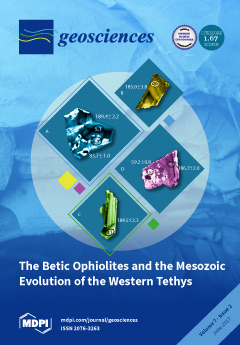Investigation on the mobilization and the redistribution of major, trace and rare-earth elements (REE) was performed along a soil profile developed on gabbro in the semi-arid zone (Northern Cameroon), using mineralogical and geochemical analyses. The gabbro has high contents in Ba, Cr, V, Sr, Ni, Zn, Zr, Cu, Co and Sc. The total REE content is 49 mg/kg with strong light rare-earth elements (LREE) abundance. The Ce/Ce* and Eu/Eu* ratios are very close to 1 (0.98 and 1.02 respectively) and the (La/Yb)
N ratio is very low (1.48). The weathering of the bedrock leads to the differentiation of coarse saprolite, fine saprolite, loamy clayey horizon and humiferous horizon. Among trace elements, Cr and Zr concentrations range between 50 and 150 mg/kg; Ga, Y, Co, Cu, Ni and Sc concentrations vary between 50 and 150 mg/kg while those of Cs, Hf, Nb, Rb, Sn, Ta, Th, U and Pb are below 5 mg/kg. The total REE contents vary from 62.52 to 78.81 mg/kg, with strong LREE abundance. The values of the (La/Yb)
N ratio (~1.04–1.59) is low and indicate the low REE fractionation. Negative Ce anomaly (Ce/Ce* ~ 0.86) and positive Eu anomalies (Eu/Eu* ~ 1.22) are observed respectively in the middle part and the whole soil profile. Mass balance calculation reveals the leaching of Ca, Mg, K, Ba, Cr, Rb, Co, Cu, Ni, Al, Cs, Sr, U and V, and accumulation of Si, Fe, Ti, Mn, Na, P, Ga, Hf, Nb, Sn, Ta, Y, Zr, Sc, Zn and REE during the weathering.
Full article





